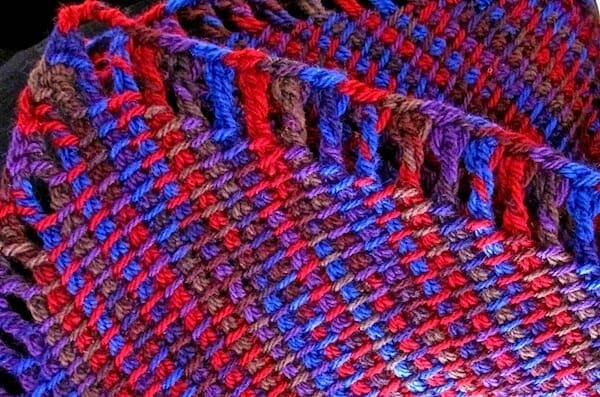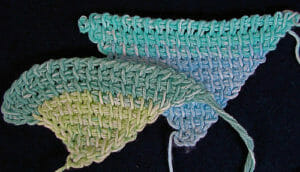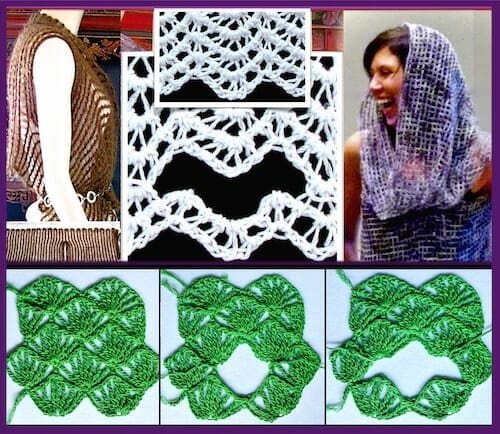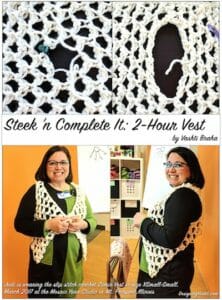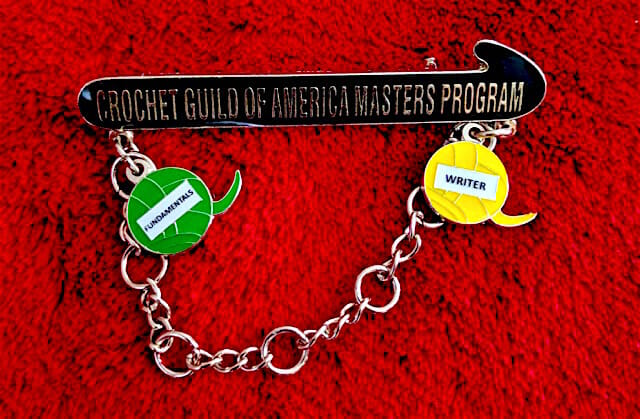
I like this new pin for CGOA’s new Master’s Program (view full size image). These pins were given out on a special night at the conference. I earned the Writer charm for writing two sections of the Masters in Fundamentals.
Do you know what I do on the plane flight home from a conference? I fill out a simple worksheet. It’s a nice way to reflect on everything.
I’ve done this since 2008. That’s at least ten conferences. (In some years CGOA had two conferences, a national and a regional. I’ve also attended a TNNA show here and there.) It has really come in handy so I’ve turned it into a PDF that you can download below for free.
Here’s the story on two of the six entry fields of the worksheet.
“What Got Crocheted?”
This is the first question. What it really means is “Of all the crochet supplies I packed, what did I actually get to?” Can you relate? Originally it was to help me be realistic about how many crochet projects and balls of yarn I need to stuff into my luggage! I know I’m not the only one who packs too much crochet for a trip LOL.
Nowadays I just plain enjoy reflecting on it. Sometimes I’ve even crocheted more rows on a project because I look forward to saying so on the worksheet, so it’s also motivational.
This year, what got crocheted is a swatch idea I’ve always wanted to try: to substitute the chains in a spiderweb pattern with love knots:
I also added so many more rounds to “Astrowirbel” during the 5.5 hour flight to Portland that I almost doubled its size.
“Goals Met & Unmet”
This part of the worksheet used to be more freelance minded, such as, “I finally sat down with X editor.” It has become much more, though. It’s a way to commemorate new friends I’ve made. It has also helped me see that a goal I started with wasn’t very realistic for the event, or as important in retrospect. Or, that I accomplished more than I realized while I was having so much fun.
This year, an unmet goal was to go out into Portland and see lots of roses, the Powell’s City of Books store that sounds amazing, a Peets coffeehouse, and get some supplies for my room. I was too busy teaching, or making sure I ate well between classes.
Some goals I met are: no typos in my class handouts (except a minor one in the Self-Healing Stitches class). I met and spent quality time with Dela Wilkins! I got to know CGOA’s new management company, a great group of people. I think they’re going to be a great fit with CGOA.
Post-Conference Worksheet PDF
Direct link to the PDF: Vashti’s Post-Conference Worksheet.
Keep it in mind for CGOA’s 25th Anniversary Conference July 10-13, 2019, in Manchester NH!
